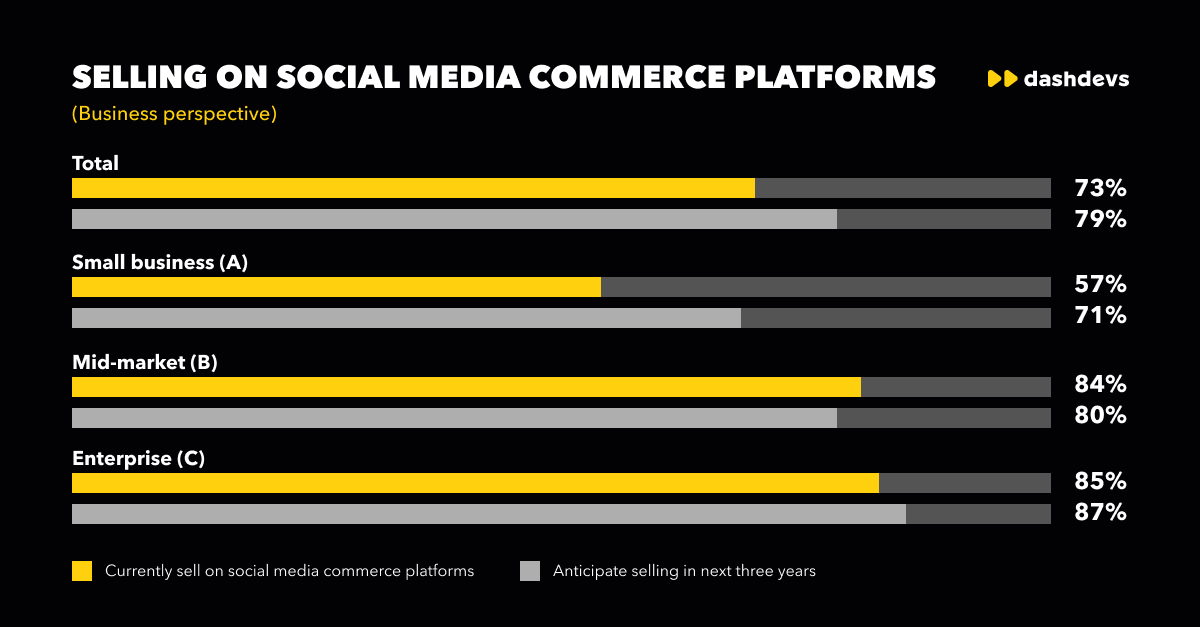JULY 11, 2023
6 min read
The way we connect, communicate, and engage with others has been revolutionized by social media platforms. However, these platforms have gone beyond mere social interaction and expanded their functionality to include integrated payment solutions. This shift has brought a significant transformation in how we conduct online transactions, creating new opportunities and challenges for businesses and customers alike.
One noteworthy development in the realm of digital payments is the rise of P2P payment tools. They enable seamless funds transfers between individuals and have found a natural home within social media platforms, allowing for P2P social payments. As a result, transaction volumes and values of these P2P social payments are rapidly increasing, driven by the growing use of social media.
As we navigate this dynamic landscape, both businesses and individuals stand to benefit from embracing the convenience and security offered by P2P social payments. Leveraging the integration of payment options within social media platforms, users can enjoy streamlined and simplified payment processes. However, it is crucial to prioritize robust security measures to protect sensitive financial information and mitigate any associated risks.
In this article, I will guide you through the transformative impact of social media payments, discuss the implications for the fintech industry, and highlight the immense growth potential within the realm of P2P social payments.
Popular Social-Based Payment Apps
When it comes to peer-to-peer (P2P) payment apps, there are several popular options that have gained significant traction. Let’s take a closer look at some of the most widely used social-based payment apps:
#1. Venmo
- Instantaneous money transfers to family and friends.
- Incorporates a Facebook-like news feed within the app.
- Payments are initially visible to your friends unless you adjust your privacy settings.
- Users often add emojis to payment notes for fun or illustrative purposes.
#2. Facebook Messenger
- Seamlessly send and receive funds while using Messenger for chatting.
- Link a debit or credit card, or use a Facebook gift card.
- Locate the dollar sign button in Messenger, enter the amount, and send money.
- Integrated within the widely-used Facebook platform.
#3. Zelle
- Available as a standalone app or within participating banks’ online banking apps.
- More than 1,000 banks support Zelle.
- Enables quick and secure money transfers to other individuals.
- Funds are deposited into the recipient’s account within minutes.
#4. PayPal
- A well-established digital payment platform.
- Offers P2P payments as one of its key features.
- Provides a range of additional services, such as online shopping and merchant payments.
#5. Apple Pay
- Built-in payment feature for Apple devices, including the iPhone, iPad, and Apple Watch.
- Securely send money to others through iMessage or Siri.
- Supports contactless payments at physical stores.
#6. Square’s Cash App
- Allows P2P payments and offers additional features like Bitcoin trading.
- The Cash Card feature enables users to make purchases with a personalized debit card.
- Popular among younger users and small businesses.
#7. Google Pay
- Google’s digital payment platform is available on Android devices.
- Seamlessly send money to contacts and make payments at supported retailers.
- Offers loyalty and rewards programs for users.
#8. Instagram (via Facebook Pay)
- Instagram, a popular social media platform, now offers payment functionality through Facebook Pay.
- Users can securely make payments directly within the Instagram app.
- Facebook Pay allows for seamless transactions, leveraging the existing payment infrastructure of Facebook.
These popular social-based payment apps, including Instagram with its integration of Facebook Pay, have transformed the way individuals conduct financial transactions. They provide convenient and user-friendly experiences, allowing for various transaction types such as P2P payments, in-app purchases, and e-commerce transactions, which continue to redefine the digital payment landscape.
Benefits and Risks of Social Media Payment Platforms
Let’s delve into the pros of payments via social media for users, and, additionally, I will address the cons involved, including security concerns, privacy issues, and the importance of robust fraud prevention measures.
Benefits of Social Media Payment Platforms
#1. Quick and convenient transactions:
- Transfer funds quickly and hassle-free.
- Instant arrival of funds in real-time.
- Make effortless peer-to-peer payments between two parties.
- Eliminate the need for physical payment methods like credit cards and checks. #2. Enhanced security features:
- Encryption protocols protect your account and ensure privacy.
- Set up two-factor authentication for added account protection.
Risks of Social Media Payment Platforms
#1. Digital security concerns:
- Increased risk due to the direct link to bank accounts or debit cards.
- Possibility of falling victim to scammers accessing and transferring funds from your account. #2. Identity authentication:
- Lack of mandatory re-authentication during transactions, potentially allowing unauthorized individuals with access to your device to send or receive money. #3. Limited buyer protection:
- Insufficient coverage for losses incurred during transactions.
- Varying levels of protection across different payment apps. #4. Additional fees:
- Credit card payments may attract additional fees, sometimes as high as 3% compared to debit card transactions.
As you know, security and privacy concerns are paramount when linking your financial accounts to these apps. For enhanced security, consider choosing apps with a strong track record in data protection, such as Apple Pay, Venmo, Square’s Cash App, Facebook Messenger’s P2P, or Zelle.
To avoid becoming a victim of scams, exercise caution and only engage in transactions with trusted individuals. Avoid maintaining a balance in your account and leverage any additional security measures provided by the apps.
Lastly, be diligent in verifying the recipient’s identity before sending any funds to ensure the correct person or username is selected.
Advantages of Social Commerce for Businesses
By harnessing the advantages of social commerce, your business can streamline the customer journey, improve conversion rates, and create a more efficient and secure payment experience for its audience.
- Enhanced Transaction Speed: Simplify the buying process for your customers by enabling them to complete transactions seamlessly within the social media platform. Say goodbye to the hassle of redirecting buyers to external payment processors or e-commerce sites, which means faster conversions and a smoother shopping experience.
- Cashless Convenience: Embrace the cashless revolution and cater to the preferences of modern consumers. With social media payment platforms, your customers can enjoy the convenience of buying and selling goods without the need for physical cash. It’s all about a hassle-free, all-in-one digital wallet experience.
- Seamless Customer Experience: Capitalize on the widespread adoption of social media by integrating commerce seamlessly into these platforms. By leveraging social media payments, you provide your customers with a user-friendly experience that eliminates the need to remember multiple bank codes, credit card numbers, or passwords. It’s all about streamlining the buying process and making it a breeze for your audience.
- E-commerce Integration: Take advantage of the power of social media as a comprehensive e-commerce solution. No longer do you need to invest in a separate online storefront. Instead, leverage the reach and features of social media platforms to host everything you need for your goods and services . It’s about convenience, cost-effectiveness, and maximizing your online presence.
- Secure Payments: Rest assured that social payment platforms come equipped with robust security measures. Your customers can trust that their transactions are safe and protected. With deposits going directly into your business bank account once the transaction is approved, you can focus on growing your business with peace of mind.

Bottom Line: Security and Support for Your Social Payments
The final point in this informative article is highlighting the significance of online security in this realm. Safeguarding data should be a top priority to instill trust and protect sensitive information. If you are the user, when signing up for a social media payment app, you entrust your credit or debit card details along with personal information. And if you are a business owner, you must establish a secure foundation for your online business. It is essential to implement crucial security measures such as encryption and tokenization. Additionally, ensuring PCI DSS compliance will safeguard cardholders from potential fraud.
At DashDevs, we understand the importance of secure and reliable payment solutions for your business. Our expertise lies in assisting businesses like yours in navigating the complexities of social payments while ensuring the utmost security and support. Whether you need guidance in implementing robust security protocols or require professional assistance in building a PCI DSS-compliant infrastructure, we have the knowledge and resources to help.
Don’t hesitate to reach out to us for tailored solutions that address your specific needs. We are dedicated to empowering your business with the confidence to thrive in the world of social commerce and maximize the benefits of social media payment platforms.







